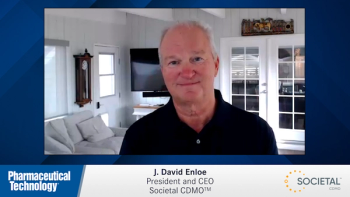
From Interphex 2012: Modern Pharmaceutical Manufacturing
In attending the exhibitions and conference sessions at Interphex 2012 this week in New York, we gain a pulse on the current and future state of pharmaceutical manufacturing.
In attending the exhibitions and conference sessions at Interphex 2012 this week in New York, we gain a pulse on the current and future state of pharmaceutical manufacturing. So, a fundamental question arises: what is modern pharmaceutical manufacturing?
It is clear that the industry is moving toward a new model in pharmaceutical manufacturing, a science- and risk-based approach under a product life-cycle concept as many of the conference sessions reflected. Driven by quality-by-design principles, companies are seeking ways to enhance their process understanding and build better control strategies based on that understanding in their manufacturing processes. Strategies for risk assessment and risk mitigation have been an important theme among the conference sessions as well as the tools, such as process analytical technology (PAT), which can be used to better that understanding. Related to these efforts is a focus on FDA’s recent process validation guidance, also a subject of several conference sessions. The guidance aligns process validation activities with a product life-cycle concept and with existing FDA guidance and ICH guidelines, such as Q8 (R2) Pharmaceutical Development, Q9 Quality Risk Management, and Q10 Pharmaceutical Quality System as a means to encourage the use of modern pharmaceutical development concepts, quality risk management, and quality systems at all stages of the manufacturing process life cycle.
As much as regulatory considerations and the overall goal of product quality shape manufacturing processes, there also are market considerations. As pharmaceutical companies continue to align their manufacturing networks with product demand, decisions on how to best manage capital and operating costs emerge. In certain areas, such as biopharmaceutical production, a prevalent theme among the conference sessions and in the product innovation of exhibitors is the adoption of single-use components and technology to afford greater manufacturing flexibility as a means to reduce capital expenses as well as operating costs, such as by facilitating turnaround times between product campaigns and reducing set-up times. Modular manufacturing is the further iteration of this paradigm, and although still a niche area, several exhibitors emphasized these approaches in bioprocessing and fill–finish operations.
So as much as the new products and product enhancements are the stars of Interphex, they reflect the underlying themes for the new paradigm for pharmaceutical manufacturing: one based on deeper process knowledge and understanding using a science and risk-based approach to manufacturing that can meet the always foremost goal of product quality.
Newsletter
Get the essential updates shaping the future of pharma manufacturing and compliance—subscribe today to Pharmaceutical Technology and never miss a breakthrough.

